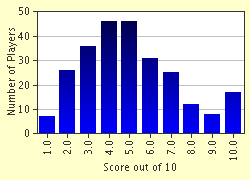Quiz Answer Key and Fun Facts
1. A long time ago, an ancient species of pigeon migrated to the Mascarenes, a loose collection of small islands located east of Madagascar, and evolved into the dodo and solitaires. Where did this bird originate from?
2. Before the coming of Europeans, Mauritius was an island paradise that had no major predators, enabling the dodo and other birds to evolve without fear of extinction. Although the Portuguese visited the island around 1500, who landed a fleet of ships on Mauritius's southeast coast in 1598 and is credited with being the first to colonize the island?
3. Although they evolved from a common pigeon ancestor, what main physical feature distinguished the dodo from the solitaires?
4. Around 1650 in England, a rare dodo specimen arrived at Oxford's Ashmolean Museum for preservation and display. At the time, preservation techniques were primitive at best. In 1755, about 80 years after the extinction of the dodo on Mauritius, the Oxford dodo was ordered burned by the museum's director, due to its extensive decay. Just before the fire consumed THE VERY LAST DODO IN EXISTENCE, a portion was retrieved by an alert curator, one William Huddersfield. What part(s) of this dodo was saved?
5. Oxford (England) played another role in the popularity of the dodo. During the 1860's, this Oxford University lecturer wrote the children's classic "Alice in Wonderland" and introduced the dodo as one of the characters. Who wrote the novel?
6. During the mid to late 1600's, with the dodo's population rapidly declining, there lived on Mauritius another large flightless bird that was sometimes mistaken for the dodo.
First explorer: "Did I just see a dodo go by?"
Second explorer: "No, what you saw was a ______."
7. One important factor to the colonists was the edibility of the resident fowl. What was the general gastronomical consensus (how did they taste?) on the dodo and solitaire, according to most historical accounts?
Cook: "Okay, so what do you think of the meal?"
Sailor: "Chomp! Munch! Well, ________."
8. In addition to eating most likely fruits, nuts, vegetation, and berries, the dodo also swallowed something else to help it digest its food. What did the dodo swallow?
9. The tambalacoque (a.k.a. Calvaria major or Sideroxylon grandiflorum), commonly called the "dodo tree", is a long-living tree endemic to Mauritius. Assumed to be on the verge of extinction in the early 1970's, it was theorized by avian scientist Stanley Temple that the tree's seeds needed to pass through the dodo's digestive tract in order to germinate. Unable to test his hypothesis with a genuine dodo, Temple used this bird instead in his experiment.
10. The richest known deposit of fossil dodo bones was located on a sugar plantation in a small marshy swamp called the "Mare aux Songes" (French translation: "Pond with Dreams"). On which coast is this swamp located?
Source: Author
benniebenbenny
This quiz was reviewed by FunTrivia editor
crisw before going online.
Any errors found in FunTrivia content are routinely corrected through our feedback system.


